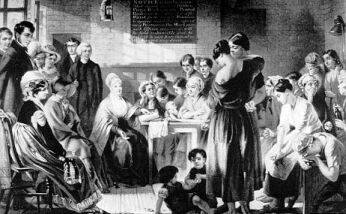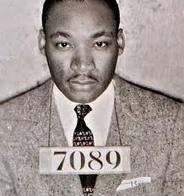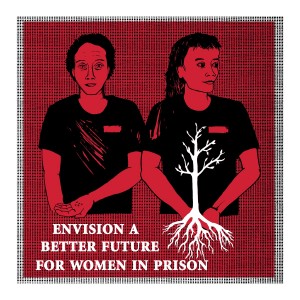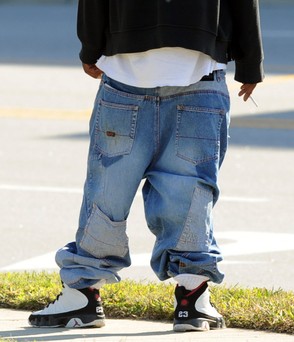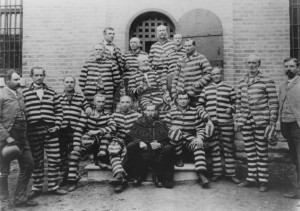This post is inspired by an article that I read yesterday (h/t solitary watch).
Apparently prisoners who “have been behaving poorly” at the Santa Cruz County Jail are treated to a “diet loaf.” From the article:
The loaf, by most accounts a highly effective measure in getting inmates to follow rules, is the only example of food being used as discipline in the correctional system, and has been challenged under the Eighth Amendment as cruel and unusual punishment in several U.S. states.
The exact origin of the idea to serve meatloaf as a punishment is unknown, however the practice goes back to at least the early ’80s, when the state of Arizona was sued over a bland meatloaf served to misbehaving inmates for five days at a time. Arizona eventually lost that case because it was applied too indiscriminately, but a version of the loaf is still served there for disciplinary purposes.
Before reading this article, I must admit that I had not thought very much about the use of food as punishment. Earlier in the week, I wrote about prison clothing as the embodiment of punishment. Yet thinking about food in a similar way had not really occurred to me until I read the article.
Many people joke about how awful prison food usually is. The very concept of “prison food” denotes something unappealing. However this case of the diet loaf is something more than just terrible prison food. It is about using something as basic as food to control behavior and people. Over the past few years, prisoners have resisted this type of control. I did not know it but there is a coterie of lawyers who are dedicated to addressing prison food.
Court challenges to the use of the loaf as punishment have come up in Vermont, Illinois, Nebraska, Pennsylvania, Washington and West Virginia, among other states. Typically its use has been upheld, although some states have placed narrow stipulations on its implementation, such as using it only in cases where the prisoner acts out with food or utensils.
“With the Eighth Amendment, the law on prison conditions is looking at a baseline, not the ideal,” said Mona Lynch, professor of criminology, law and society at UC Irvine and the director of the school’s Center in Law, Society and Culture. “It’s a fairly tough hurdle to claim something is unconstitutional…. Courts don’t necessarily look at psychological effects, they look at if it will make you physically ill. Courts traditionally look at things like: Is it too hot or too cold? Is there rampant pestilence, rampant infestation of rodents? Is nutrition below what is needed to survive and maintain adequate body weight? Is water drinkable and potable? It’s very, very basic stuff. As long as its not killing them its should be OK.”
One case brought in Oregon made it to the United States Court of Appeals, 9th Circuit, where the judges argued in their 1993 decision that “[t]he Eighth Amendment requires only that prisoners receive food that is adequate to maintain health; it need not be tasty or aesthetically appealing.”
Some states, such as New York, Massachusetts and Minnesota, have banned the loaf, and using food for punishment in general, from their prisons. The California Department of Corrections and Rehabilitation does not use it in the prisons it runs, but locally managed facilities are free to serve it, as both the Santa Cruz and Los Angeles County jails do.
I am a foodie. My favorite thing to do on a weekend is to visit a new restaurant with friends in order to sample a new cuisine. As the Christmas and New Year holidays approach, think of how central a role food will play for you and your family. Across most cultures, food plays an important role in shaping our interactions with others. For those of us privileged to live in the West, it is often about more than simple sustenance. This is the cultural context in which prisoners in the U.S. are presented with disciplinary diet loaves described as follows:
The County Jail loaf looks like it is constructed from layers of particle board, and little kernels of corn and slivers of carrot jut out from the insides when its is bisected. It does not taste bad, but rather is so dry and lacking in flavor as to be at best unappetizing and at worst better used mixed with milk to make a nice spackle. It is served with two slices of wheat bread and, instead of the typical serving of milk, a cup of water.
The article got me interested in learning more about what role food plays in prisons and jails. I came across this article by a dining critic in Chicago Magazine about Nutraloaf at the Cook County Jail.
Nutraloaf, a thick orange lump of spite with the density and taste of a dumbbell, could only be the object of Beelzebub’s culinary desires. Packed with protein, fat, carbohydrates, and 1,110 calories, Nutraloaf contains everything from carrots and cabbage to kidney beans and potatoes, plus shadowy ingredients such as “dairy blend” and “mechanically separated poultry.” You purée everything into a paste, shape it into a loaf, and bake it for 50 to 70 minutes at 375 degrees. Eat two a day and, boom, all your daily nutrients, right there. If you want the recipe, ask me.
Or just get yourself tossed into Cook County Jail, where an inmate who causes serious food-related problems buys himself a one-way ticket to Nutraloafopolis. Get caught making homemade hooch in your cell toilet? You get Nutraloaf. Hurl food at a guard or stab someone with a spork? Nutraloaf. Of the jail’s 9,000 inmates, 21 have endured the Nutraloaf program since it began in June. One begged—No! Anything but Nutraloaf!—and another went on a hunger strike. Both men, and virtually every other Nutraloafer, straightened up enough to get back to the usual diet of oatmeal and processed bologna.
This sounds thoroughly disgusting to me.
In July, I took the afternoon off from my job as Chicago magazine’s dining critic and drove to 26th and California to dine on Nutraloaf. Cook County’s stridently gray-brown cafeteria would never be mistaken for Naha, and the dish’s presentation aims less for the wow factor than the break-your-spirit factor. An employee from Aramark Correctional Services—a branch of the Philadelphia-based company that also provides fare for college dorms and NFL stadiums—presented me a Styrofoam container sagging with a blunt ginger-toned mass roughly the size of a calzone and with the appearance of a neglected fruitcake. It had nothing else in common with either.
The mushy, disturbingly uniform innards recalled the thick, pulpy aftermath of something you dissected in biology class: so intrinsically disagreeable that my throat nearly closed up reflexively. But the funny thing about Nutraloaf is the taste. It’s not awful, nor is it especially good. I kept trying to detect any individual element—carrot? egg?—and failing. Nutraloaf tastes blank, as though someone physically removed all hints of flavor. “That’s the goal,” says Mike Anderson, Aramark’s district manager. “Not to make it taste bad but to make it taste neutral.” By those standards, Nutraloaf is a culinary triumph; any recipe that renders all 13 of its ingredients completely mute is some kind of miracle.
I ate two-thirds and gave up, longing for any hint of flavor, even a bad one. That night, my stomach’s rebellion against the loaf was anything but neutral. I felt so full and lethargic that I skipped dinner and the following breakfast. And let’s just say I finally had a lot of time alone to catch up on my New Yorker reading.
Even though inmates in several states, including Illinois, have sued over Nutraloaf, alleging cruel and unusual punishment, correctional departments everywhere are introducing their own versions of the “disciplinary loaf.” None of the lawsuits have been successful. “We’re not trying to dump Tabasco sauce on their tongues or anything like that,” Dart says. “It just tastes like nothing.” In other words, they found a loophole: Nutraloaf is not cruel; it’s just unusual. Soon it may cease to be either.
The name Aramark is ubiquitous in the corrections industry. It is unsurprising to find the company in the middle of this story as well. This is one of the reasons that I always stress the “industrial” aspect of the PIC. One cannot understand the explosion of the prison population without focusing on who benefits from this phenomenon. For example, Texas prisoners spent 95 million dollars at commissaries in 2009. Most of that money was spent on food items:
* The inmates bought $18 million in “chips and snacks,” as the department categorizes them, during fiscal year 2009. They spent another $15 million on “assorted drinks,” including 3.5 million cans of Coca-Cola.
* Ramen noodles are a staple. The prison system sold a whopping 33 million 25-cent packages during that period. The cost: $8.3 million.
You can see a chart and a tree map of what else prisoners spent their money on.
Finally, please take 4 minutes to watch the following video of a prison food convention… Just another cog in the wheel of the prison industrial complex. The exhibitors are very focused on making sure that the hot dogs have no sticks:

